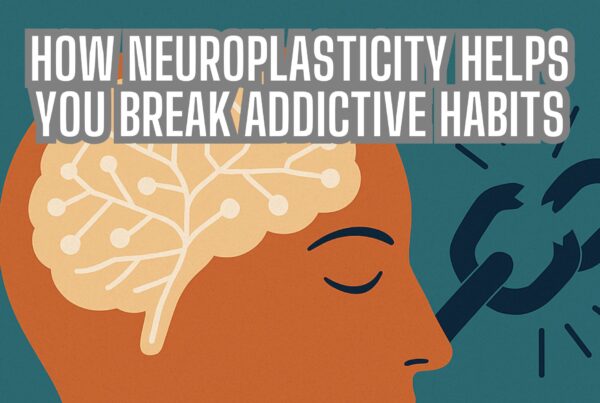Mindful Eating Habits: Transforming Your Relationship with Food
Understanding and altering our eating habits require more than just the desire to change; it necessitates a deep dive into the psychology and neuroscience that underpin these behaviors. Dr. Jud Brewer’s insights into the neuroscience of habit change illuminate a path forward that doesn’t rely on the fleeting resource of willpower but instead, on the enduring power of mindfulness.
Beyond Willpower: Understanding Habit Formation
The traditional reliance on willpower to combat poor eating habits overlooks the complex neural networks involved in habit formation. Every habit is born from a cycle where a cue triggers a behavior, which then leads to a reward. Over time, this cycle strengthens, making the habit automatic and challenging to break. Understanding this neural process is crucial for developing strategies to alter unhealthy eating habits effectively.
Our brain’s reward system plays a significant role in habit formation, particularly with eating behaviors. Foods high in sugar and fat can hijack this system, creating a feedback loop that perpetuates cravings and overeating. By recognizing these patterns, we can begin to dismantle them, replacing unhealthy habits with more nourishing alternatives.
Mindfulness: A Tool for Disruption
Mindfulness practices offer a way to interrupt this cycle, bringing awareness to our actions, thoughts, and feelings surrounding food. This awareness creates a gap between the cue and our automatic response, allowing us to choose a different action.
Embracing mindfulness for change involves practical exercises and a dedication to becoming more attuned to the nuances of our eating habits and the triggers that lead to unhealthy choices.
The Science of Mindful Eating
Mindful eating focuses on experiencing food more intensely — paying attention to the taste, smell, and texture of each bite, without judgment or distraction. This practice can significantly alter the way we interact with food, transforming it from a source of comfort or stress relief into a moment of genuine nourishment.
Learning to distinguish between physical hunger and emotional cravings is a cornerstone of mindful eating. By tuning into our body’s signals, we can start to eat in response to physical need rather than emotional desire, leading to healthier eating patterns.
Implementing Mindful Eating in Daily Life
Incorporating mindful eating into your daily routine doesn’t have to be daunting. Start small, with one meal a day, and gradually build up as you become more comfortable with the practice.
Start with Silence: Begin each meal with a moment of silence, using this time to express gratitude for your food and prepare yourself for mindful eating.
Engage All Your Senses: As you eat, pay attention to all aspects of your food—the look, the aroma, the textures, and flavors. This full sensory experience can enhance satisfaction and prevent overeating.
Mindful Eating Practice: Take the time to eat slowly, savoring each bite and paying attention to the taste, texture, and aroma of your food. This practice can help you recognize when you are full and reduce overeating.
Hunger Body Scan: Before eating, pause to conduct a quick body scan to assess whether your hunger is physical or emotional. This can prevent eating out of boredom, stress, or other non-hunger cues.
Mindful Craving Acknowledgement: When a craving hits, instead of immediately succumbing to it, take a moment to acknowledge it and explore the sensations and emotions associated with the craving. Often, simply acknowledging a craving can reduce its intensity.
Overcoming Challenges in Mindful Eating
While the benefits of mindful eating are clear, implementing it can come with challenges, such as distractions and deeply ingrained habits. However, by setting realistic goals and being patient with yourself, you can overcome these obstacles.
Creating an environment that supports mindful eating is crucial. This might involve eating without electronic distractions, serving food on smaller plates to encourage smaller portions, or sharing meals with others who support your goals.
Like any skill, mindful eating requires practice and patience. Celebrate your successes, learn from your setbacks, and remember that each meal is a new opportunity to practice mindfulness.
Mindful eating habits represent not just a change in how we eat, but in how we live. By embracing mindfulness, we can transform our relationship with food from one of conflict to one of joy and nourishment.
Release Hypnosis Melbourne Hypnotherapy
Since 2015, Lawrence Akers has been working under the name Release Hypnosis offering Hypnotherapy and ACT based work to the people of Melbourne or an online service. Based on St Kilda Rd, Release Hypnosis is an easy and convenient location to get to and accessible by the ANZAC station train and tram stop. Release Hypnosis can help with a wide range of presenting issues, and I offer a free 30 minute no obligation discovery call for those who are unsure if hypnotherapy is the right way forward for them.
Download your FREE Mini-Mindfulness Meditation by simply clicking here.
Book Your FREE 30 Minute Consultation With Release Hypnosis NOW!
You may also like to read:
Exploring Content-Free Hypnotherapy
The Journey to Becoming a Better Hypnotic Subject
Best Hypnotherapy Resources 2023: Release Hypnosis Top Blogs
What Is The Success Rate of Hypnosis?








